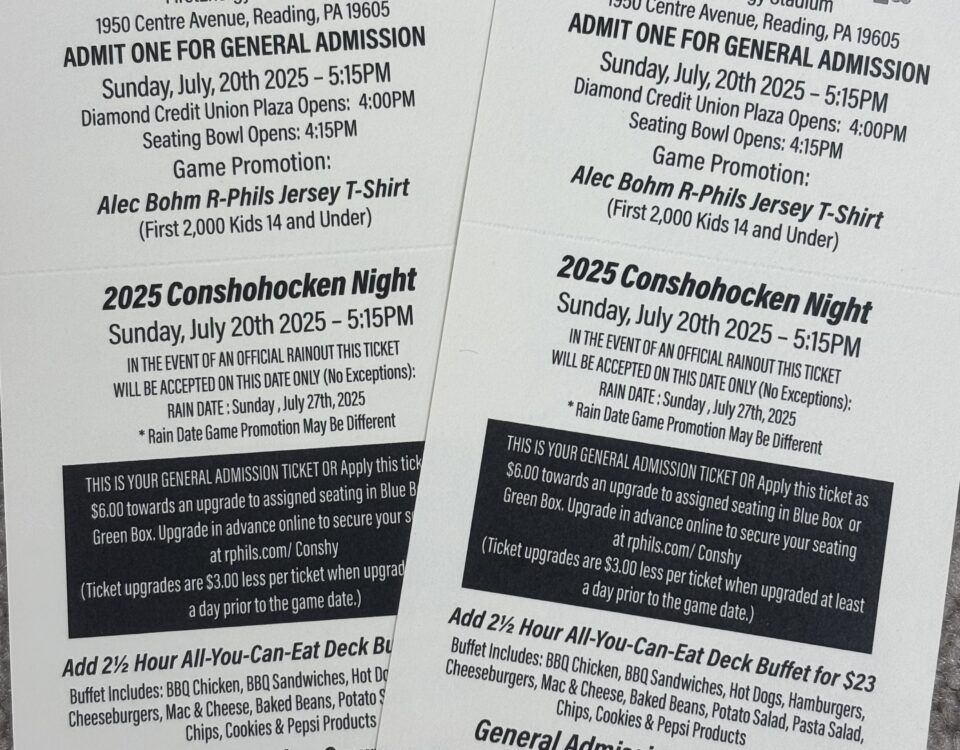
Rest Easy Sharon
January 9, 2021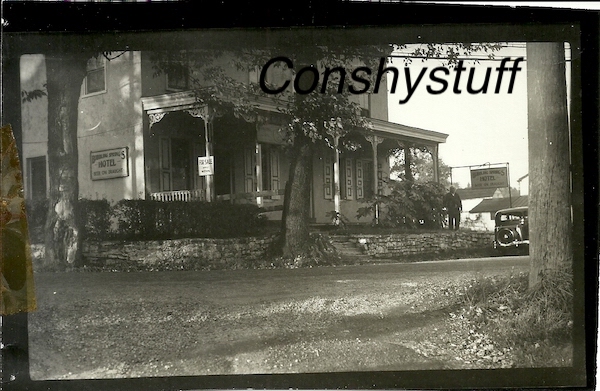
Then and Now – The Bubbling Springs Hotel
January 12, 2021History of a House – 922 Fayette Street and it’s Very Interesting Residents

History of a House
922 Fayette Street
Very Interesting Residents
By Jack Coll
1-9-20
The three story Victorian Colonial Revival house/offices/apartments located at 922 Fayette Street was built around the turn of last century, (1905). The property has a frontage of 60 feet and extends to Forrest Street and at one time had a large garage in the rear on Forrest Street.
The former residence served two prominent residents long before being turned into offices and apartments.

The house was built at a time when Conshohocken was experiencing a housing shortage as the borough’s steel mills and textile mills were exploding with business, laborers were in high demand as immigrants poured into the borough in search of the American Dream.
The borough’s business district in downtown was booming, businesses were expanding up Fayette Street. Residents were constantly in search of entertainment, we had a great sports following in the borough. Basketball was very popular in the winter as local championship teams played their games in cages like the one in the building on Hector Street that would later become Moser’s Glass. Baseball drew large crowds in the spring and summertime down at the Meadows and other empty fields where teams battled for bragging rights and by 1914 football at the Community Field (“A” Field) was drawing thousands of fans for all the home games and chartered trains would transport two to three thousand fans to away games.
By 1915 Conshohocken had not one, not two, but three successful Movie Houses, residents flocked to the Fayette Street movie houses to see live entertainment like Mildred Harris and her husband Charlie Chaplin among dozens of other theatre stars of the day. Chaplin appeared at the Gem Theatre once located at 26 Fayette Street in the former Mcgoingal Building that later became Benny and Reds Barber Shop. Chaplin performed at the Gem Theatre in February 1919, it was reported in the Conshohocken Recorder Newspaper that Chaplin also performed at Little’s Opera House once located at First Avenue and Fayette Street in 1915 and again in 1917. During the years he appeared in Conshohocken, Chaplin was a modern day rock-star, he was the biggest performer in the world.
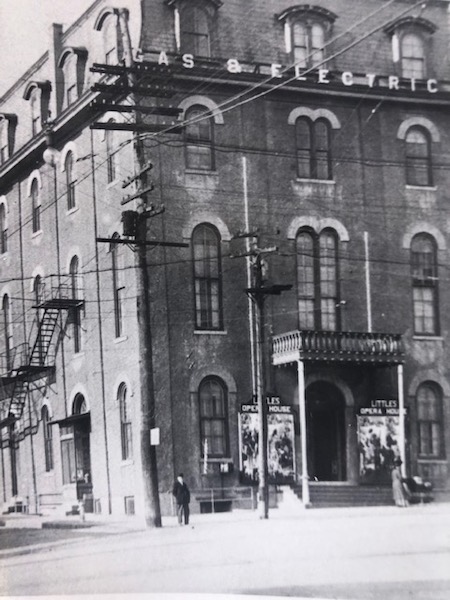
Little’s Opera House was built in 1872 by the members of the Conshohocken Local Order of Red Men. The four story building consisted of the ground floor which was at street level and always used as a shopping market of some kind. The opera house and movie theatre were located on the second floor, the third floor of the building was used as a meeting hall for civic organizations, and the fourth floor was used as a lodge for the Red Men. It should be noted that Conshohocken High School and St. Matthew’s High School held all their early graduation ceremonies at Little’s Opera House not to mention that SS. Cosmas and Damien Church was founded and chartered at Little’s Opera House.
Little’s Opera House was owned and operated by William Little who for many years lived at 922 Fayette Street. During Little’s ownership of the opera house he brought many of the top personalities of the day including Tuscon Joe, a genuine North American Indian performing a high class tenor singing act in full native costume. He also booked many top-notch boxing matches including English Jack O’Brien who was the Welterweight Champion of the World at the time. He also hosted road shows, plays and silent films, Weddings and Wedding Receptions.
William Little was born on December 8, 1856 at Spring Mill, he was the son of James and Martha Stemple Little. Mr. Little attended Conshohocken public schools and at age 15 he landed his first job at a local brick yard. He later followed in his father’s footsteps that had been employed by the Schuylkill Navigation Company, and secured a position on the canal, between Schuylkill Haven and New York City.
Later, he became interested in the crushed stone and slag business and operated a business in Spring Mill for a number of years, employing a large number of local residents. In 1891 he became engaged in the coal, flour and feed business and later in the general contracting business in which he was very successful.
Mr. Little was elected to town council in 1903 and later served as the borough’s street supervisor. It was around this time that he purchased the Opera House. It should be noted that Mr. Little was a prominent member of Fritz Lodge, No. 420 Free and Accepted Masons in Conshohocken and a standout member of the Conshohocken Penn Club.
Mr. Little sold the theatre and building in 1915 to James J. McCaggrey who was president of the Novelty Amusement Company located in Philadelphia and operated 35 movie houses throughout the region. Unfortunately McCaffrey died just two weeks after purchasing the opera house. Harry Schwalbe later purchased the opera house and refurbished the theatre. In 1929 the theatre was fitted for “Talkies,” the Silent Film Era was coming to an end. The Opera House was razed in 1939, and made way for F. W. Woolworths.
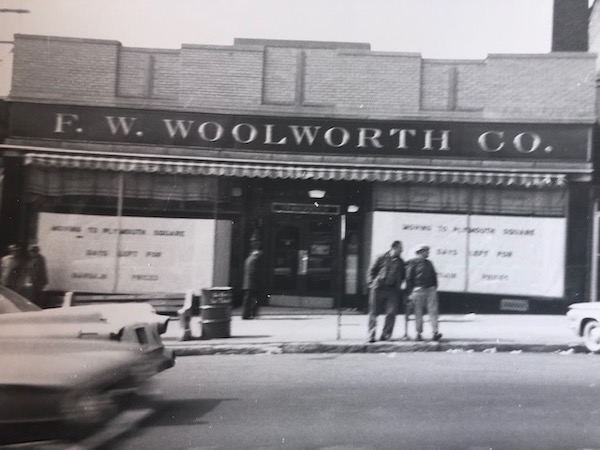
William Little sold his house at 922 Fayette Street in the fall of 1921 to Dr. William Earle Brandt. Mr. Little moved to his new home on Ride Pike in Harmonville where he passed away ten years later at the age of 75.
Dr. Brandt spent a good portion of his life as a baseball writer and columnist. He authored a book titled “Do You Know Your Baseball,” and became one of the first broadcasters to have a radio show about sports—called “Inside of Sports”—broadcast nationwide.
Brandt also became Public Relations manager for the Philadelphia Phillies and, later, Relations Director for the Service Bureau of the National League of Professional Baseball Clubs. Dr. Brandt took the Conshohocken name throughout the country, wherever and whenever he traveled.

Dr. William Earle “Bill” Brandt was born in Philadelphia on October 30, 1891 and became a sports writer for the old Philadelphia Record in 1912 at the age of 20. Brandt graduated from Central High School in 1909 and later attended and graduated from Muhlenberg College in Allentown, Pennsylvania. When just a young sports writer, he also started his career as a doctor of osteopathic medicine. He studied at the Philadelphia College of Osteopathy and received his degree in 1921.
Following his years of sports writing for the Philadelphia newspapers and New York Times, he became a publicity director for the Philadelphia Phillies. (That may have had something to do with the fact that Jerry Nugent, then owner of the Philadelphia Phillies and Brandt were neighbors on Fayette Street.) When Ford Frick retired from the National League, Brandt was appointed to his position.
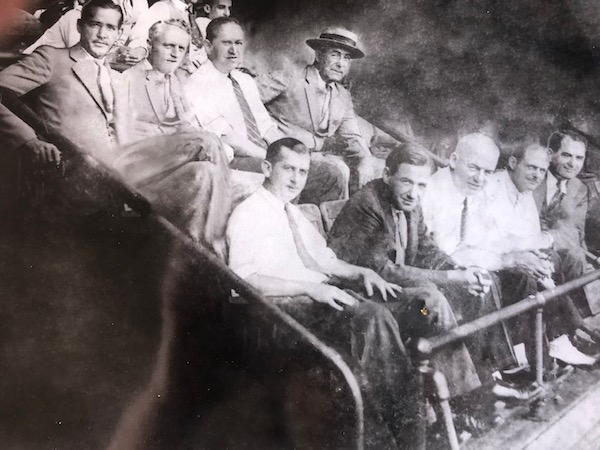
Dr. Brandt has a long list of accomplishments during his lifetime. In addition to his baseball life, he was also a football official for a number of years. In 1951, he became Public Relations Director of the Philadelphia College of Osteopathy. In 1953 he was named President of the college and remained in that position until 1957. In 1960, he went to Chicago to become acting editor of all publications of the American Osteopath Association. All along, Dr. Brandt authored articles for the Saturday Evening Post, The American Magazine, and Encyclopedia Britannica.
He was given a lifetime honorary membership to the Philadelphia Sports Writer Association of America, was the former President of the Philadelphia Sports Writer Association, and was a member of the Pen and Pencil Club. Dr. Brandt shared a medical office with his sister, Dr. Ruth Brandt, in Conshohocken.
Bill Brandt also found time to volunteer in his hometown. He was a former member of the Conshohocken School Board and secretary with the School Authority. He also served as a member of the Conshohocken Civil Service Commission, which was responsible for examinations for incoming Conshohocken Police Officers. Brandt served as President for many years of the gone but not forgotten very popular Conshohocken Church Basketball League.
Dr. Brandt lived at 922 Fayette Street for a good portion of his life and passed away on November 18, 1963, at the age of 72 in the Norristown Charity Hospital. (Montgomery Hospital)
If I’m not mistaken, (and I could be) 922 Fayette Street was turned into offices and apartments sometime in the early 1970’s. Some of us might remember Doctor Fein and Kattleman occupying that space for a number of years in the late 1970’s and early 1980’s. In more recent years Remington and Vernick Engineers rented space in the building.
I marvel at the number of Dr. Brandt’s accomplishments and wonder if many people today could match the type of life he lived?
And so the story of another interesting house and occupants in Conshohocken, stayed tuned to Conshystuff.com for more interesting vintage articles.
A good portion of this article was taken from the book “Tales of Conshohocken and Beyond” written by Jack and Brian Coll. A very few of these 450 page hard-back books remain for sale at Coll’s Custom Framing, 324 Fayette Street.
For more History of a House articles go to Conshystuff.com
Photographs Above Include:
A view of 922 Fayette Street where William Little and William E. Brandt once lived for more than five decades combined.
Little’s Opera House once located on the northwest corner of First Avenue and Fayette Street. The Opera House hosted all the top traveling shows back in the late `1800’s and early 1900’s. St. Matthew’s and Conshohocken High school held all their early graduations at the Opera House and SS. Cosmas & Damien Church was formed and chartered at the Opera House.
F. W. Woolworths constructed a new building following the demolition of the Opera House in the late 1930’s. This Photo was taken in 1961 after Woolworths had moved to the Plymouth Square Shopping Center. By 1961 Fayette Street had been declining for nearly a decade. The opening of the Plymouth Square Shopping Center with its 960 free parking spaces in 1961, followed by the opening King of Prussia Plaza in 1964 and the opening of Plymouth Meeting Mall in 1966 contributed to the total collapse of lower Fayette Street by the early 1970’s.
Dr. William Brandt (center) a one time resident of 922 Fayette Street seen here attending a medical convention in Chicago back in the summer of 1960.
A one-time sports writer William Brandt seen in the second row, third from left, sits in the sports writers box at Yankee Stadium back in 1931 when he was writing for the New York Times. Brandt purchased the house at 922 Fayette Street from William Little in 1921 and lived there for the next four decades until he passed away in 1963.

